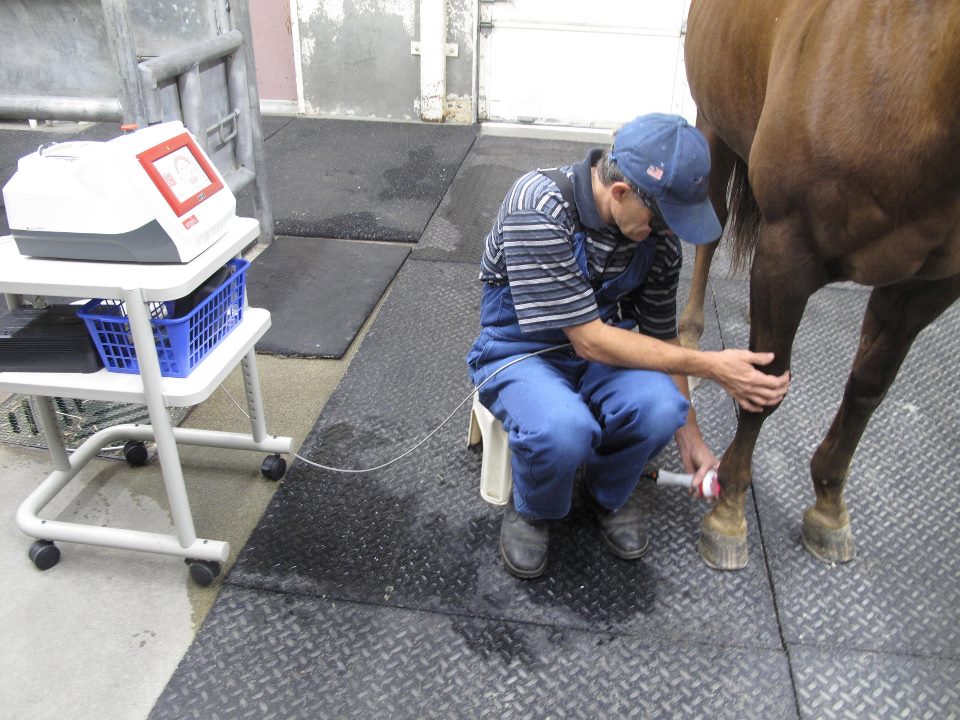Everything You Need to Learn About Equine Therapy for Mental Health And Wellness
Everything You Need to Learn About Equine Therapy for Mental Health And Wellness
Blog Article
Just How Laser Therapy in Horse Treatment Is Reinventing Veterinary Take Care Of Steeds
Laser therapy has actually arised as a transformative method in equine vet care, providing a non-invasive option that expedites healing and boosts total wellness. Leveraging precise light wavelengths, this innovative therapy stimulates cellular regrowth, lowers inflammation, and alleviates discomfort. Its efficacy prolongs from bone and joint injuries to persistent ailments like osteoarthritis, substantially boosting mobility and life high quality for steeds. The portability and flexibility of laser treatment tools further underscore their expanding necessity amongst veterinarians. As we check out the detailed mechanics and real-world successes, the profound effect on equine clinical techniques comes to be increasingly apparent.

Recognizing Laser Therapy
Understanding laser therapy is important for appreciating its role in equine treatment. Laser therapy, also recognized as photobiomodulation, entails the application of certain wavelengths of light to tissues, which can cause various organic impacts. This restorative method harnesses the power of light power to pass through the skin and underlying tissues, stimulating mobile processes and boosting cells repair work.
The technology behind laser treatment is grounded in the concept of photochemistry, where photons are taken in by chromophores within cells, leading to raised ATP production and inflection of reactive oxygen species. This, consequently, promotes mobile proliferation, lowers inflammation, and increases healing. Vet professionals utilize various sorts of lasers, consisting of low-level lasers (LLLT) and high-power Class IV lasers, depending upon the details restorative purposes and the nature of the equine condition being dealt with.
Different laser wavelengths and power setups are carefully chosen to target numerous tissue midsts and achieve preferred professional results. Safety and security protocols are extremely important, as incorrect use can result in thermal damages or suboptimal restorative results. Thus, a comprehensive understanding of laser therapy's systems and applications is crucial for its efficient execution in equine veterinary practice.
Advantages for Horse Wellness
The myriad benefits of laser therapy for equine health and wellness incorporate enhanced healing, pain decrease, and boosted movement. This sophisticated therapy method leverages specific wavelengths of light to penetrate tissues, promoting mobile feature and advertising quick tissue repair. The non-invasive nature of laser therapy makes sure marginal stress and anxiety and pain for the horse, helping with a smoother healing procedure.

By reducing swelling and pain, and improving tissue repair service, laser therapy assists in restoring joint function and muscle versatility. Hence, laser therapy stands as a transformative device in modern equine vet care.
Typical Problems Treated
Laser treatment has emerged as a flexible therapy alternative for a range of common equine conditions. Additionally, laser treatment is effective for problems like osteoarthritis, where it helps mitigate joint swelling and advertise tissue repair work.
Wound monitoring is another area where laser treatment has revealed significant promise. Chronic injuries or slow-healing ulcers can be especially tough in horses, but laser therapy boosts mobile regrowth and improves blood circulation, thus speeding up the healing process. Source In addition, laser therapies have actually been efficiently used in managing hoof problems such as laminitis and abscesses, reducing pain and promoting faster recuperation.
Horse professional athletes usually experience performance-related problems like muscle mass soreness and stress cracks. Laser treatment aids in reducing muscular tissue tiredness and speeds up the recovery of micro-injuries, hence making certain that steeds return to peak efficiency faster. By addressing these varied conditions, laser treatment is transforming the landscape of veterinary treatment, offering a non-invasive, effective choice to standard treatments.
Technology Behind Laser Treatment

Laser tools utilized in vet medication typically make use of low-level laser therapy (LLLT) or chilly laser treatment. Unlike high-powered medical lasers, these devices operate at lower power degrees, optimizing therapeutic benefits while decreasing thermal damage. The energy from the laser light promotes adenosine triphosphate (ATP) manufacturing, boosts mobile metabolism, and accelerates tissue repair service procedures.
Modern laser therapy equipment for equine treatment is designed with flexible setups to cater to the particular requirements of different cells and problems. Furthermore, improvements in laser innovation have led to the development of mobile, portable devices, making it easier for vets to supply therapy in a range of go settings, from facilities to stables.
Success Stories and Instance Research Studies
Showcasing the tangible advantages of laser treatment, various success stories visit this web-site and instance research studies illuminate its transformative influence on equine health and wellness. One such case entails a pedigreed racehorse struggling with persistent tendonitis. Conventional treatments produced very little renovation, yet after integrating laser therapy right into the program, the horse showed considerable decreases in inflammation and discomfort within weeks, eventually returning to competitive racing.
One more engaging example features a dressage equine detected with severe pain in the back, restricting its performance. A veterinary team utilized low-level laser treatment (LLLT) to target the inflamed areas, leading to significant improvement in flexibility and a significant decline in pain. Over several sessions, the equine restored its peak kind, showcasing the efficiency of laser therapy in dealing with musculoskeletal problems.
In addition, a research conducted at a leading equine clinic analyzed 50 equines with different soft cells injuries treated with laser treatment. The outcomes stood out: 85% of the steeds showed increased recovery times and improved wheelchair. These situations highlight the adaptability and performance of laser treatment in equine medication, supplying a non-invasive, scientifically-backed strategy to boosting recuperation and efficiency in equines.
Final Thought
Laser treatment is reinventing equine vet care by offering a non-invasive treatment that accelerates healing, reduces inflammation, and reduces pain. With its effectiveness in dealing with a series of problems, from bone and joint injuries to chronic ailments like osteoarthritis, this modern technology significantly enhances equine wellness and flexibility. The transportability and versatility of laser therapy even more underscore its transformative effect on vet techniques, strengthening its function as a crucial device in contemporary equine healthcare.
Report this page